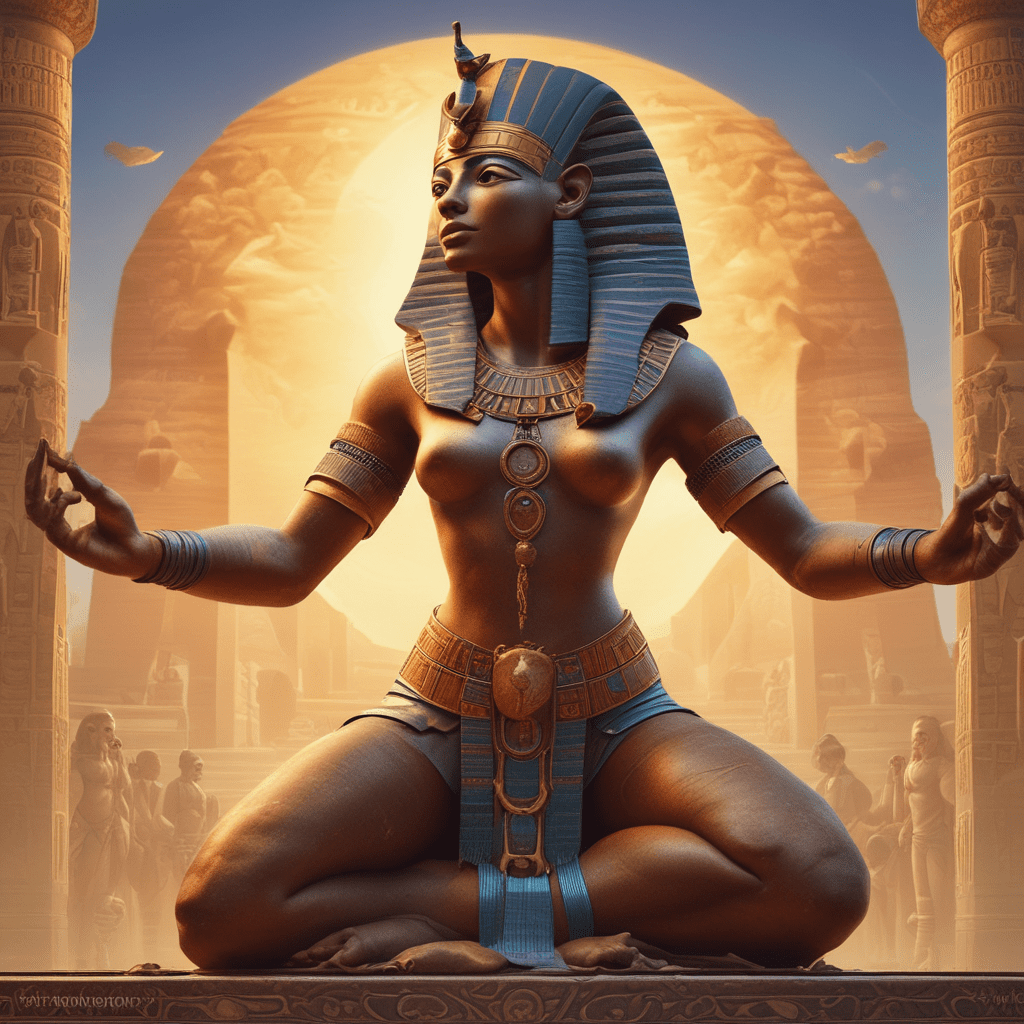The Myth of the Goddess Tefnut in Ancient Egypt
Ancient Egyptian mythology presents a rich tapestry of deities, each with their own symbolism and significance. Among these divine figures is Tefnut, the goddess of moisture, rain, dew, and fertility. Let’s delve into the mythological realm surrounding the intriguing goddess Tefnut.
Who Was Tefnut in Ancient Egyptian Mythology?
In Egyptian mythology, Tefnut was one of the ancient deities and was often depicted as a lioness or as a woman with the head of a lioness. She was considered the embodiment of moisture and is closely linked to concepts of primordial waters and creation. Tefnut was associated with fertility, representing the nourishing and life-giving aspects of moisture in the arid Egyptian landscape.
The Myth of Tefnut’s Role in Creation
One prominent myth featuring Tefnut involves the Heliopolitan cosmogony where she, along with her brother Shu, were the children of the primordial creator god Atum. According to the myth, Tefnut, along with Shu, was tasked with the creation of the world by Atum. Tefnut’s presence was vital in giving birth to elements essential for sustaining life, emphasizing her role in the creative forces of the universe.
Tefnut’s Symbolism and Worship
Tefnut’s symbolism as a deity of moisture tied her closely to the agricultural cycles in Ancient Egypt. The annual flooding of the Nile River was often seen as a reflection of Tefnut’s vital role in sustaining fertility and abundance in the land. Along with her connection to water, Tefnut also embodied aspects of femininity, strength, and protection.
Legacy of Tefnut in Modern Interpretations
Today, the legacy of the goddess Tefnut continues to intrigue scholars and enthusiasts of ancient Egyptian mythology. Her symbolism as a nurturing and life-giving deity resonates with themes of creation and renewal. By studying Tefnut and her mythological significance, we gain insights into the profound worldview and beliefs of the ancient Egyptian civilization.
FAQ about the Myth of the Goddess Tefnut in Ancient Egypt
Who is Tefnut in Egyptian mythology?
Tefnut is a prominent goddess in Ancient Egyptian mythology, often associated with moisture, rain, and fertility. She is considered the daughter of the sun god Ra and is believed to symbolize life-giving water and the nurturing aspects of nature.
What role does Tefnut play in Egyptian mythology?
Tefnut is known as the goddess of moisture and is sometimes depicted as a lioness or a woman with the head of a lioness. She played a vital role in the creation myth, where she, along with her brother Shu, helped bring balance and order to the world according to Egyptian beliefs.
How is Tefnut typically represented in ancient Egyptian art?
In ancient Egyptian art, Tefnut is often portrayed with the head of a lioness or as a lioness standing or seated. She may also be shown holding a scepter, symbolizing her power and authority as a goddess associated with fertility and life-giving water.
What significance does Tefnut hold in Egyptian religious practices?
Tefnut’s role as a goddess of moisture and fertility made her a significant figure in Egyptian religious ceremonies and rituals, especially those related to agricultural prosperity, rainfall, and the cyc





